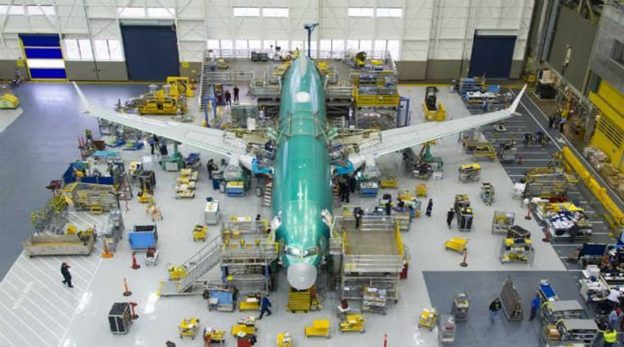All private and commercial flights were stalled for the longest time possible, and business leaders faced the dual challenges of navigating through COVID-19 and maintaining the sector’s resilience in the face of this crisis.
The last two years have been highly challenging for the aerospace and aviation sectors globally. Ripple effects have been felt by the Indian aerospace industry as well. All private and commercial flights were stalled for the longest time possible, and business leaders faced the dual challenges of navigating through COVID-19 and maintaining the sector’s resilience in the face of this crisis.
If 2021 was the year of recovery, 2022 is going to be a turning point. Globally, cash flows and investments have started to increase in space tech companies – an industry long viewed as too risky for serious investment. This has also translated into increased investments in aerospace. In India, policy interventions with government schemes such as UDAN, which focuses on strengthening regional connectivity and aviation infrastructure, and national programs like Atmanirbhar Bharat have opened up a plethora of opportunities for the private sector to develop core expertise, accelerate research and development (R&D) and invest in manufacturing in the country.
The pandemic has also accelerated adoption of new technologies at a pace not witnessed before. This has further led to demand in areas like data science, cloud computing, cyber security, artificial intelligence (AI), machine learning (ML), and big data analytics. Companies are now investing in expanding their portfolio and digitalizing processes.
The big tech play
Innovation is the bedrock of every industry. As we move into a future dotted with revolutionary new realities such as aerial ride-sharing and autonomous vehicles, rapid adoption of advanced technologies will bring in radical efficiencies and operational benefits that were previously unimaginable. These technologies are here to stay and will redefine the future of transportation. At the level of design philosophy, businesses are slowly moving away from hardware product design – the ‘nuts and bolts’ manufacturing – and becoming more focused on software applications that solve problems. The promise of affordable mobility across commercial, civil and defense applications in aerospace is thus deeply embedded in software.
Within the domain of product design, AI algorithms evaluate and streamline design and manufacturing systems in a shorter timeframe. Apart from making systems energy-efficient, AI-powered generative design, when combined with 3D printing, brings aesthetic, practical designs to life. Additionally, cloud-based applications facilitated by AI make maintenance simpler and easier.
Urban air mobility (UAM) and advanced air mobility (AAM) will be the next big disrupter of the aero industry and there is huge potential in India to be a leader in designing and developing these. The next generation of innovation will be super compact, fly-by-wire control systems and super-small, sense-and-avoid radar systems. The best thing is that not only does this technology enable autonomy and urban air mobility; it also has applications in other industries.
Building India’s R&D capabilities
According to the industry body NASSCOM, India is a hotbed for R&D and digital talent. India’s engineering R&D services sector is expected to reach a valuation of $63 Bn by 2025, up from $31 Bn in 2019.
India’s attractiveness as the destination of choice for aero R&D includes the ability to develop strategic business impact, strong focus on continuous innovation, large digital talent pool, and differentiated service delivery. India has one of the largest R&D talent pools in the world to address the scalability needs of global enterprises.
To develop and nurture the right talent for the aero industry and to emerge as a new global leader in this space, reskilling and upskilling should be the nation’s number one priority for both private and public sectors. Industry-academia collaboration, including joint R&D initiatives, curriculum design, and internships will be key to developing a future-ready workforce.
Achieving sustainability goals
The global aviation industry has also been an early adopter of cleaner fuels. Significant progress has been made in developing sustainable aviation fuel (SAF) as a drop-in substitute to fossil fuel-based aviation fuels. Progress has also been made on developing SAF as a 100% replacement to existing jet fuel. To achieve carbon neutrality in aerospace, companies are focusing on sustainable propulsion alternatives along with incremental technology improvements and operational efficiencies. SAF made from renewable resources such as biomass currently offers 70-80% reduction in carbon emissions. Environmental, social, and governance (ESG) priorities are now also becoming imperatives in corporate governance. Finally, with multiple signatories to climate conventions (such as the recently-concluded COP26) starting to promote “test and learn” mechanisms and driving sustainability through industry certifications, we should soon expect large players in multiple industries to collaborate with a single-minded focus on achieving sustainability goals for organizations, sectors and entire economies.
Flying into the future
Rising incomes, a growing mid-segment, competition among low-cost carriers, investment in airport infrastructure and conducive government policies have led to a healthy growth of the aviation sector in India. The country is expected to become the world’s third-largest aviation market by 2024.
The big leap forward can be expected when companies move above incremental gains towards an era of exploration, with the next generation of product and service innovation. With innovation at the forefront, organizations can focus on maintaining a high degree of competency in managing technology, while handling their workforce and improving their global footprints. The transition from bricks to chips and in bringing Internet and computing technology together have led to tremendous cost and process optimization for the aerospace industry. As these technologies mature and become smarter, it is not just the ecosystem that grows – our entire concept of mobility does.
https://www.financialexpress.com/defence/aerospace-the-next-big-bet-for-india/2538764/





